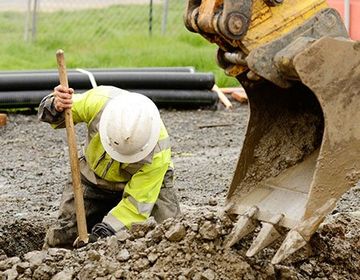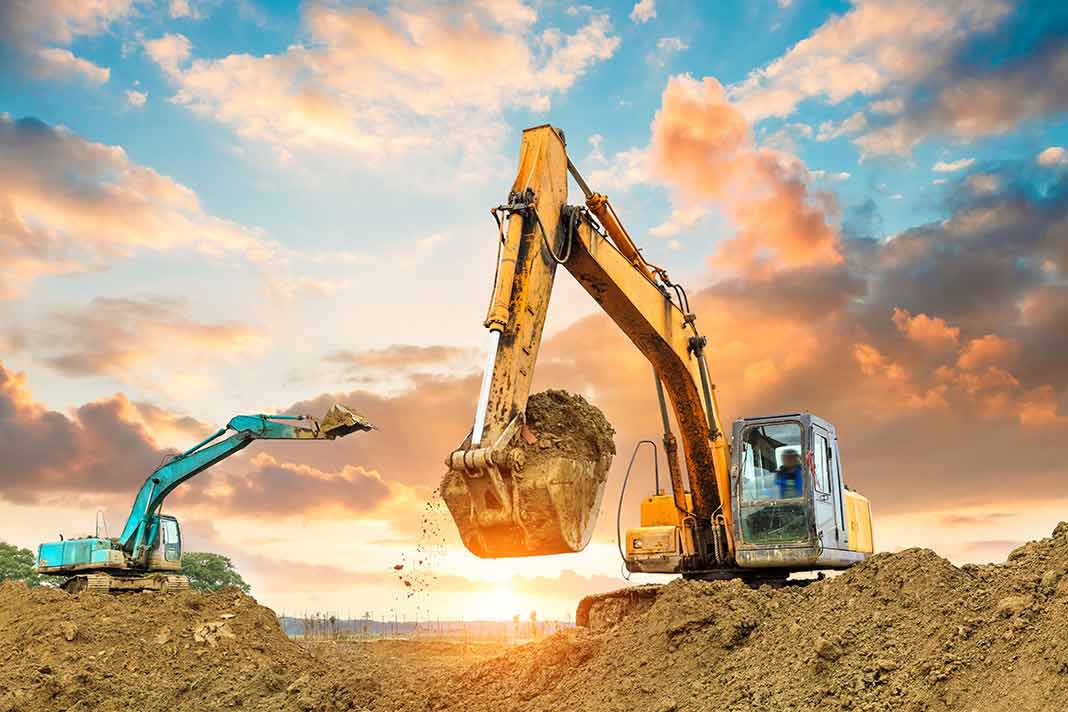Septic Ohio - Comprehensive Septic System Solutions in Ohio
Wiki Article
Introducing the Art of Excavation: Pro Tips for Safe and Effective Excavating
As soil is turned and earth is relocated, the details of excavation reveal themselves, requiring a keen understanding of equipment, soil composition, safety and security procedures, and environmental factors to consider. The proficiency needed to browse these elements efficiently can suggest the difference between a successful excavation task and a prospective catastrophe.Importance of Proper Tools
To ensure the safety and effectiveness of any type of excavation job, making use of the appropriate devices is vital. Excavation tasks vary in scope and complexity, varying from small household landscape design tasks to massive construction undertakings.These functional makers come in different sizes to match various project demands. Small excavators are optimal for smaller sized tasks, while bigger excavators tackle extra considerable projects effectively.
Apart from excavators, various other important tools consists of dump bulldozers, vehicles, and plates. Dump trucks are necessary for getting rid of and delivering excavated materials, while plates are made use of for excavating deep and slim trenches. Bulldozers master jobs that call for pushing large quantities of soil or particles. By investing in the appropriate devices, excavation projects can be finished securely, on time, and with accuracy.
Understanding Soil Composition
A comprehensive understanding of dirt composition is basic for carrying out excavation jobs with accuracy and safety. Comprehending the different sorts of soil is essential as it straight impacts excavation techniques, devices selection, and general job effectiveness. Dirt make-up normally includes 4 primary elements: sand, silt, clay, and natural issue. Each component has special residential properties that influence exactly how dirt reacts to excavation procedures.Sand particles are the biggest and give good water drainage however use little communication. Silt bits are smaller than sand however larger than clay, offering moderate drain and communication. Clay particles are the tiniest and offer high communication however bad drain. Organic issue, such as decomposing plant product, influences soil fertility and stability.
Before starting excavation, performing soil examinations to determine its structure and features is crucial. This info aids in selecting the suitable equipment, applying precaution, and developing excavation techniques tailored to the specific soil conditions - lancaster excavation. By understanding soil make-up, excavation specialists can improve task end results while ensuring security and adherence to best practices
Precaution and Protocols
Comprehending dirt structure is the cornerstone whereupon safety and security measures and protocols for excavation tasks are constructed, guaranteeing the wellness of employees and the success of the venture. There are numerous key actions that need to be executed to mitigate threats and protect against crashes. when it comes to safety and security throughout excavation.Primarily, before any type of digging commences, a detailed evaluation of the site need to be performed to identify any potential risks such as below ground utilities, unsteady soil problems, or nearby frameworks that could pose a risk. It is important to have an experienced person manage the excavation procedure to ensure that all safety procedures are complied with purely.
Furthermore, all workers associated with the excavation has to be properly educated in safe digging techniques and the correct operation of devices. Personal protective tools (PPE) such as construction hats, high visibility clothing, site link handwear covers, and safety boots ought to be put on in all times to reduce the risk of injuries. lancaster excavation. Routine safety and security meetings and toolbox talks need to also be performed to maintain all workers educated concerning prospective threats and reinforce safe work techniques. By adhering to these security measures and procedures, excavation tasks can be finished effectively and without event.
Reliable Excavation Planning
When starting an excavation project, thorough planning is important to make sure efficiency, safety, and successful results. Reliable excavation planning involves several essential actions that are important for the smooth execution of the project. The first step is to perform a comprehensive site assessment to recognize any kind of possible risks, such as below ground energies or unstable soil conditions. This information is vital for establishing a comprehensive excavation plan that includes precaution and risk mitigation methods.Once the website analysis is full, the next step is to develop a clear timeline and timetable for the excavation activities. This includes identifying the series of jobs, tools demands, and workforce allotment. Proper scheduling assists avoid hold-ups and guarantees that the job remains on track.

Moreover, interaction among all group participants is critical throughout the preparation phase. Clear regulations, normal updates, and efficient control are important for an effective excavation project. By spending effort and time in meticulous planning, excavation teams can significantly improve performance, decrease risks, and attain effective results.

Handling Ecological Factors To Consider
With enhancing focus on environmental sustainability in building and construction methods, managing ecological considerations has actually ended up being an essential element of excavation projects. Excavation activities have the possible to influence the surrounding setting through dirt disintegration, sediment overflow, habitat interruption, and contamination of water resources. To reduce these risks, it is vital to carry out finest methods that focus on environmental security.
Additionally, correct waste monitoring is vital to avoid dirt and water contamination. Implementing treatments for the disposal of hazardous products, recycling of waste materials, and lessening making use of hazardous chemicals can considerably reduce the environmental influence of excavation jobs. By integrating these techniques right into excavation planning and execution, building firms can make sure that their tasks are not just safe and efficient but likewise environmentally liable.
Conclusion
In conclusion, understanding the art of excavation calls for a thorough understanding of appropriate tools, soil composition, security steps, and efficient preparation. By following these standards and considering environmental elements, excavations can be performed securely and effectively. It is critical to prioritize security and productivity in every excavating project to make certain successful end results.As dirt is transformed and earth is moved, the intricacies of excavation expose themselves, requiring a keen understanding of equipment, soil composition, security procedures, and environmental considerations.To make sure the safety and effectiveness of any type of excavation project, utilizing the proper equipment is paramount.A detailed understanding of soil read here make-up is fundamental for carrying out excavation projects with accuracy and security. Comprehending the various kinds of soil is crucial as it directly impacts excavation approaches, equipment choice, and general job performance. By recognizing soil structure, excavation specialists can improve project end results while making sure safety and security and adherence to best methods.
Report this wiki page